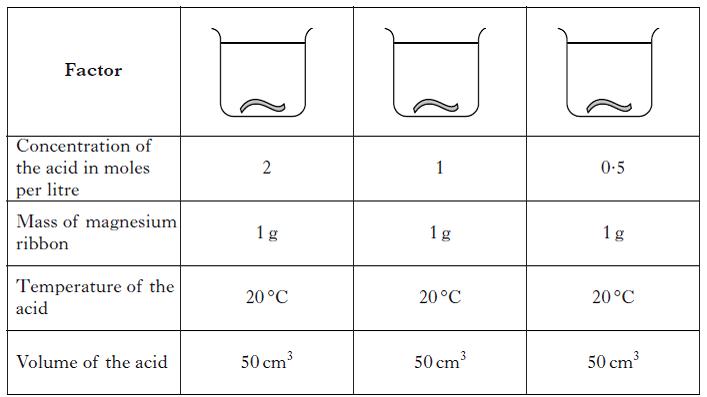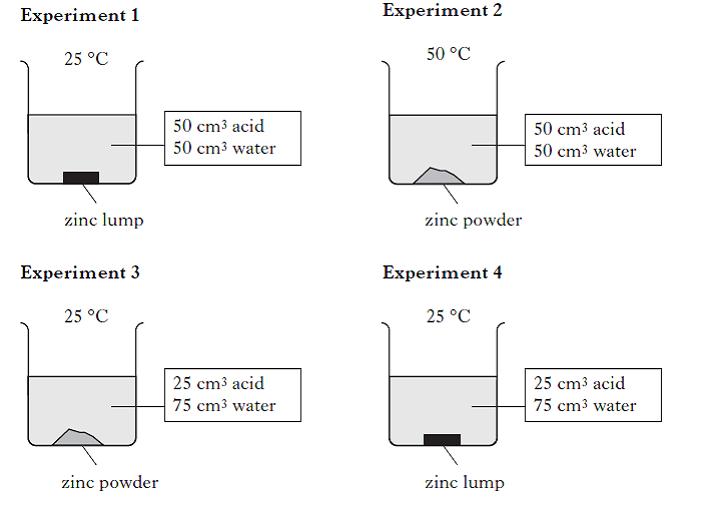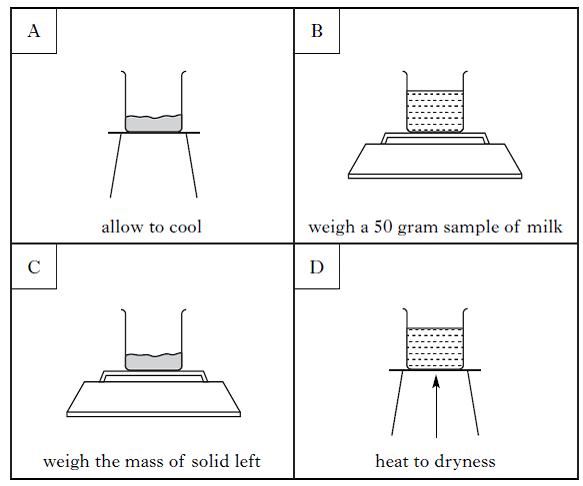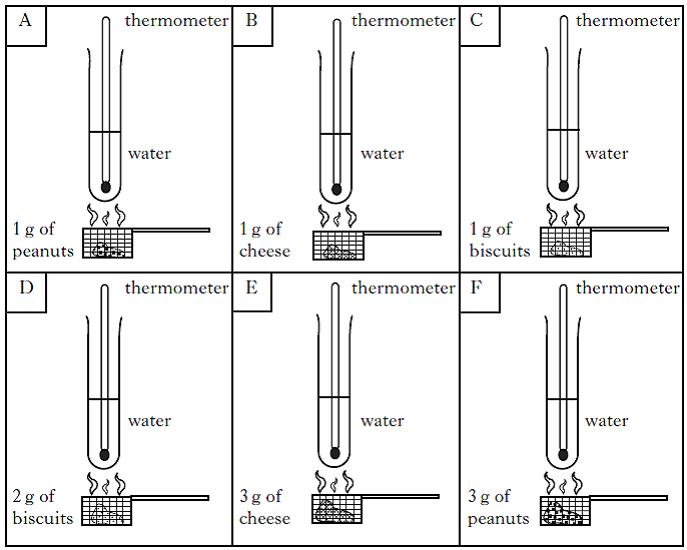| . 1 pt(s). |
A student set up four experiments to investigate the reaction between zinc and dilute hydrochloric acid. Which two experiments show how changing the particle size affects the speed of the reaction?
|
||
| A. | 1 and 2 | ||
| B. | 2 and 3 | ||
| C. | 3 and 4 | ||
| D. | 4 and 1 | ||
| . 1 pt(s). |
Milk is made up of mainly protein, fat, sugar and water. A method which is used to find the mass of solids present in milk is shown. 50 grams of milk is weighed out. The milk is heated to dryness and then left to cool. The mass of solid remaining can then be measured. In which order would the steps be carried out?
|
||
| A. | BDCA | ||
| B. | ABDC | ||
| C. | BDAC | ||
| D. | CBDA | ||
| . 1 pt(s). |
Coal contains mainly carbon. The table shows the percentage of carbon in different types of coal. Calculate the mass of carbon present in 200 kilograms of anthracite.
|
||
| A. | 90kg | ||
| B. | 180kg | ||
| C. | 45kg | ||
| D. | 200kg | ||
| . 1 pt(s). |
Solder is a mixture of tin and lead. The table shows how changing the percentage of tin can alter the melting point of solder. The data indicate that as the percentage of tin in the solder increases, the melting point of the solder | |
| A. | increases | |
| B. | decreases | |
| C. | stays the same | |
| . 1 pt(s). |
A student carried out an investigation to show how temperature affects the speed of the reaction between a sugar, found in syrup, and Benedict’s solution. The results are shown in the table attached. The data shows that as the temperature increases, the speed of reaction
|
||
| A. | increases | ||
| B. | decreases | ||
| C. | stays the same | ||
| . 1 pt(s). |
Sajeed investigated the energy content of foods. He set up six experiments. In each experiment, he burned the food and timed how long it took for the water temperature to rise by 25 ºC. Which two experiments should Sajeed compare to find out whether peanuts or biscuits have more energy?
|
||
| A. | A & C | ||
| B. | A & D | ||
| C. | F & C | ||
| D. | F & D | ||
| . 1 pt(s). |
In the lab, a student heated a compound until a chemical reaction occurred. When he tested the remains, they were attracted by a magnet. His experiment demonstrates that the compound contained | |
| A. | iron | |
| B. | lead | |
| C. | zinc | |
| D. | copper | |
| . 1 pt(s). |
Copper reacts with oxygen to form copper oxide. The properties of Copper Oxide are most likely | |
| A. | different from copper or oxygen | |
| B. | similar to both copper and oxygen | |
| C. | similar only to copper | |
| D. | similar only to oxygen | |
| . 1 pt(s). |
When chemicals are mixed together, various types of reactions may occur. Which of the following is NOT an indication of a chemical change? | |
| A. | producing heat | |
| B. | changing colour | |
| C. | evaporation | |
| D. | producing light | |







